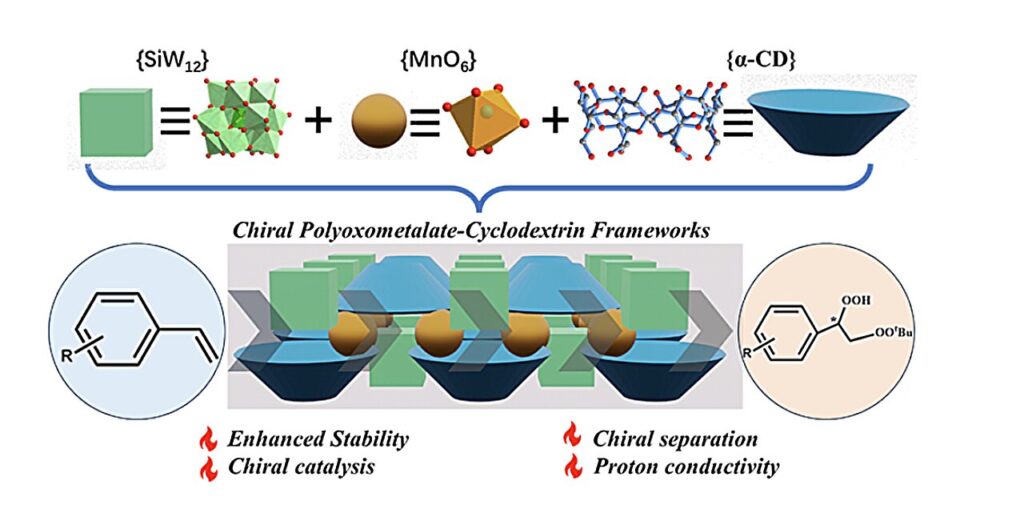A team of scientists has created a chiral assembly by blending inorganic polyoxometalates and organic cyclodextrin molecules.
Polyoxometalates (POMs) are a class of nanomaterials with many useful applications. However, using polyoxometalates as building blocks to construct chiral POM-based frameworks has been a long-standing challenge for researchers. The team produced a 3D framework in this research, constructed by coordination assembly. The resulting framework features an interlaced organic-inorganic hybrid layer.
The team has published their work in the journal Polyoxometalates.
POMs have special features that include high negative charges, notable redox abilities, and available organic grafting. These useful features have led to POMs attracting much interest in energy-related applications. Their potential applications range from material science to catalysis, medicine, environmental protection, and hydrogen production.
With their fascinating structural and chemical versatility, POMs are a recognizable choice in many fields of science, ranging from functional materials and catalysis to magnetism and biomedicine. When the POMs are used as building blocks to construct POM-based open frameworks, they have many advantages. These include robustness and intrinsic porosity. They can also be easily recycled.
Metal-organic frameworks (MOFs) are a class of crystalline porous materials that are constructed from metal ions and organic bridging ligands. They are highly uniform porous structures that have large surface areas. MOFs, with their large specific surface area and permanent pores, have become outstanding candidates for loading POMs. When POMs and MOFs are combined, they form a kind of organic-inorganic hybrid material.
These POM and MOF hybrid materials are drawing a lot of interest among researchers, especially the chiral POM-based frameworks. Chiral in chemistry refers to mirror images. To describe a molecule as chiral is to say that its mirror image of itself is different. In the past, researchers have faced challenges in using POMs to create chiral POM-based frameworks.
So, the team focused their work on the application of POMs as building blocks in the construction of chiral POM-based functionalized frameworks. Chiral POM compounds have either extrinsic or intrinsic chirality based on their chiral sources. The POM compounds’ chirality comes mainly from the chiral organic or organometallic parts. Intrinsically chiral POMs are POMs that are chiral due to symmetry breaking.
The research team was able to construct a chiral POM-based framework by blending inorganic POMs and organic cyclodextrin molecules. “As a robust chiral framework, the chiral separation and chiral catalysis have been explored,” said Cai-Hong Zhan, a professor at the College of Chemistry and Materials Science, Zhejiang Normal University. Cyclodextrins are a group of cyclic oligosaccharides that are produced from starch or starch derivatives. Because of their structure, they are good candidates to supplement the structure and improve the physiochemical properties of the MOFs.
The team connected {SiW12} anions, which are negatively charged ions, with manganese ions in an antiparallel manner. This formed a unique all-inorganic layer with significant voids. Then they combined it with an organic cyclodextrin layer that filled the voids in the POM-manganese layer. The two layers interweaved to form the organic-inorganic hybrid. They extended the layers with the sodium ion to produce a 3D framework.
The team used thermal cycling to explore the stability, chiral separation, chiral catalysis, and proton conductivity of the composite framework they had created. “The robust stability of this composite framework has been verified by thermal cycling experiments,” said Zhan
Looking ahead, the team plans to take this work further. “The chiral separation and chiral catalysis will be further explored by changing the substrate to prove that the chiral framework has potential applications,” said Zhan.
Provided by
Tsinghua University Press


